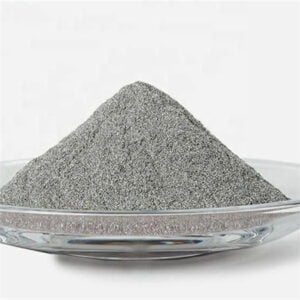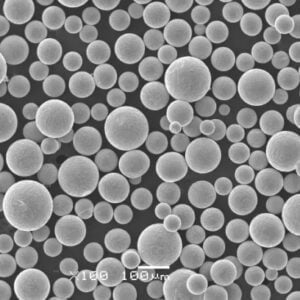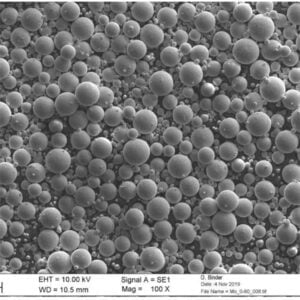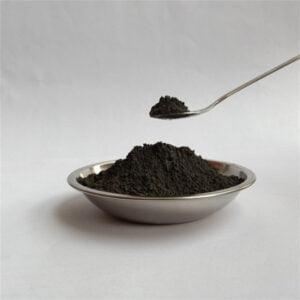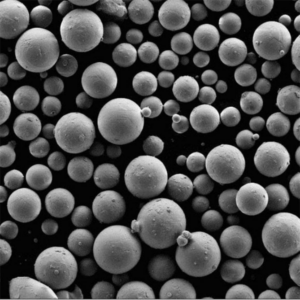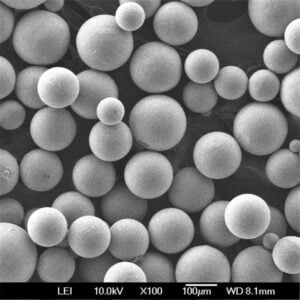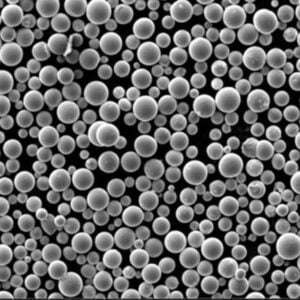
CPTi Powder: The Ultimate Guide for 2025
Low MOQ
Provide low minimum order quantity to meet different needs.
OEM & ODM
Provide customized products and design services to meet unique customer needs.
Adequate Stock
Ensure fast order processing and provide reliable and efficient service.
Customer Satisfaction
Provide high quality products with customer satisfaction at the core.
share this article
Table of Contents
Overview
CPTi powder, or Commercially Pure Titanium (CP Ti) powder, is widely used in aerospace, biomedical, chemical processing, and additive manufacturing industries due to its superior corrosion resistance, high ductility, and biocompatibility. Unlike titanium alloys such as Ti-6Al-4V, CPTi does not contain additional alloying elements, making it ideal for applications requiring high purity, excellent weldability, and superior oxidation resistance.
CPTi is classified into four grades (Grade 1 to Grade 4) based on oxygen content and mechanical properties. Grade 1 is the softest and most ductile, while Grade 4 offers the highest strength.
Key Properties
✔ Exceptional corrosion resistance, making it ideal for marine, chemical, and aerospace applications
✔ Superior biocompatibility, making it the preferred material for medical implants and prosthetics
✔ Lightweight yet strong, providing an excellent strength-to-weight ratio
✔ High weldability and machinability, making it easier to process than titanium alloys
✔ Excellent thermal and electrical conductivity, useful in energy and electronics industries
This guide will explore:
- Best CPTi powder for 3D printing
- How to choose the right CPTi powder
- Top suppliers of CPTi powder
- Properties and industrial applications
- Production methods and cost analysis
- Comparing gas-atomized vs. plasma-atomized CPTi powder
Best CPTi Powder for 3D Printing in 2025
Why CPTi Powder is Ideal for Additive Manufacturing?
- High purity ensures low contamination, making it perfect for medical, aerospace, and chemical industries
- Superior corrosion and oxidation resistance, ensuring longevity in harsh environments
- Excellent printability, reducing defects in laser powder bed fusion (LPBF) and electron beam melting (EBM)
- Biocompatibility, making it suitable for orthopedic implants, dental applications, and surgical tools
Key Factors for Selecting CPTi Powder for 3D Printing
- Spherical morphology for optimal powder flowability
- Controlled particle size distribution enhances printability and layer adhesion
- Low oxygen & impurity levels prevent oxidation defects
- Consistent mechanical properties post-processing
Comparison of CPTi Powder for Different 3D Printing Technologies
| 3D Printing Technology | Recommended CPTi Powder | Advantages | Challenges |
|---|---|---|---|
| Laser Powder Bed Fusion (LPBF) | Gas-atomized spherical powder (15-45µm) | High precision, fine details | Requires optimized laser parameters |
| Electron Beam Melting (EBM) | Plasma-atomized powder (45-105µm) | Low residual stress | Limited material availability |
| Direct Energy Deposition (DED) | Gas-atomized powder (50-150µm) | Large-scale part production | Requires post-processing |
| Binder Jetting | Irregular or spherical powder (30-80µm) | High-speed production | Requires sintering & infiltration |
For high-performance 3D printing applications, Met3DP’s gas-atomized CPTi powder is the best choice. Learn more about Met3DP’s high-quality metal powders.
Related Products
How to Choose the Right CPTi Powder
Selecting the best CPTi powder depends on several factors, including particle size distribution, atomization process, and application-specific requirements.
1. CPTi Grades
| Grade | Oxygen Content (%) | Tensile Strength (MPa) | Best Applications |
|---|---|---|---|
| Grade 1 | ≤ 0.18 | 240 | Medical Implants, Chemical Processing |
| Grade 2 | ≤ 0.25 | 345 | Aerospace, Marine, Heat Exchangers |
| Grade 3 | ≤ 0.35 | 450 | Industrial Equipment, Automotive |
| Grade 4 | ≤ 0.40 | 550 | High-Strength Aerospace, Chemical Processing |
2. Particle Size Distribution (PSD)
- Fine powders (15-45µm) → Best for LPBF (Laser Powder Bed Fusion)
- Medium powders (45-105µm) → Suitable for EBM & Binder Jetting
- Coarse powders (50-150µm) → Used in DED (Direct Energy Deposition)
3. Powder Morphology
- Spherical Powder → Best for 3D printing and powder bed fusion technologies
- Irregular Powder → Suitable for Binder Jetting & Sintering
4. Atomization Process
- Gas-Atomized Powder → High purity, excellent flowability, best for 3D printing
- Plasma-Atomized Powder → Ultra-high purity, best for specialized aerospace and high-performance applications
For high-precision 3D printing, Met3DP’s gas-atomized CPTi powder is the best choice. Contact Met3DP for more details.
Production Methods
The manufacturing process of CPTi powder plays a critical role in defining its particle morphology, purity, and mechanical performance, which directly affect its use in additive manufacturing, medical applications, and aerospace components.
Comparison of Production Methods
| Production Method | Particle Shape | Purity | Best Applications | Cost |
|---|---|---|---|---|
| Gas Atomization (GA) | Spherical | High | 3D Printing, Aerospace, Medical | Medium |
| Plasma Atomization (PA) | Highly Spherical | Ultra High | High-End AM, Biomedical, Aerospace | High |
| Vacuum Induction Melting + Gas Atomization (VIGA) | Spherical | Ultra-High | Aerospace Turbines, High-Precision AM | Very High |
| PREP (Plasma Rotating Electrode Process) | Highly Spherical | Ultra-Pure | Biomedical, Aerospace | Very High |
1. Gas Atomization (GA)
Process:
- CPTi is melted and atomized using high-pressure inert gas (argon or nitrogen), rapidly cooling the droplets into fine, spherical particles.
Advantages:
✔ Highly spherical morphology, improving flowability and printability
✔ Low oxygen content, preventing oxidation defects
✔ Excellent particle size uniformity, ensuring consistent layer deposition in additive manufacturing
Best for: Laser Powder Bed Fusion (LPBF), Electron Beam Melting (EBM), and Direct Energy Deposition (DED)
2. Plasma Atomization (PA)
Process:
- CPTi wire is fed into a high-energy plasma torch, melting it into fine droplets that form highly spherical powder particles.
Advantages:
✔ Perfect spherical shape, ensuring superior flowability in powder bed fusion processes
✔ Ultra-high purity, making it ideal for aerospace and biomedical applications
✔ Minimal satellite particles, leading to superior print quality
Disadvantages:
✖ Higher production costs
✖ Limited scalability for large-scale production
Best for: High-performance aerospace and medical implants
3. PREP (Plasma Rotating Electrode Process)
Process:
- A rotating CPTi electrode is melted by plasma while centrifugal force atomizes the molten material into fine spherical particles.
Advantages:
✔ Ultra-high purity, with minimal contamination
✔ Highly spherical morphology, leading to excellent flowability
✔ Minimal porosity, making it ideal for medical implants and aerospace applications
Disadvantages:
✖ Very high cost
✖ Limited scalability
Best for: Biomedical implants, aerospace components requiring high purity
For high-quality 3D printing, Met3DP’s gas-atomized CPTi powder is the best choice. Explore Met3DP’s powder production solutions.
Cost Analysis in 2025
The cost of CPTi powder is influenced by factors such as production method, particle morphology, purity level, and application-specific requirements.
Factors Affecting Cost
- Production Method – PREP and plasma-atomized powders are the most expensive, while gas-atomized powders offer a more balanced cost-performance ratio.
- Particle Shape – Spherical powders (for AM) are more expensive than irregular powders.
- Purity Level – Higher purity = Higher cost.
- Market Demand – Increased demand from aerospace, medical, and high-performance applications influences pricing.
Estimated Price Ranges
| Powder Type | Price (USD/kg) | Best For |
|---|---|---|
| Gas-Atomized CPTi Powder | 250−250 – 250−600 | 3D Printing, Aerospace, Medical |
| Plasma-Atomized CPTi Powder | 800−800 – 800−1,500 | Jet Engines, High-End Medical Applications |
| PREP CPTi Powder | 1,500−1,500 – 1,500−2,500 | Single-Crystal Aerospace Components, High-Purity Implants |
For cost-effective, high-quality CPTi powder, Met3DP provides precision-engineered solutions tailored to industrial needs. Contact Met3DP for pricing and availability.
FAQ
Q1: What is the best CPTi powder for 3D printing?
Gas-atomized spherical CPTi powder is optimal for LPBF, EBM, and DED due to its excellent flowability and low oxygen content.
Q2: How does CPTi compare to Ti-6Al-4V?
CPTi offers superior corrosion resistance and biocompatibility, but Ti-6Al-4V has higher strength and fatigue resistance for structural applications.
Q3: Can CPTi powder be used for medical implants?
Yes, CPTi is widely used in orthopedic implants, dental implants, and prosthetics due to its biocompatibility and corrosion resistance.
Q4: Where can I buy high-quality CPTi powder?
Met3DP is a leading supplier of gas-atomized CPTi powder, optimized for 3D printing and high-performance applications. Contact Met3DP today!
Conclusion
CPTi powder is an exceptional high-performance material for aerospace, medical, additive manufacturing, and high-temperature applications. Choosing the right powder type, production method, and supplier ensures optimal performance and reliability.
Why Choose Met3DP’s CPTi Powder?
✅ Industry-leading gas atomization technology
✅ High-purity spherical powders for additive manufacturing
✅ Reliable supply chain & global distribution
For high-performance CPTi powder, Met3DP provides state-of-the-art solutions tailored to industrial demands.
Want to learn more or get a quote? Contact Met3DP today!
Get Latest Price
About Met3DP
Product Category
HOT SALE
CONTACT US
Any questions? Send us message now! We’ll serve your request with a whole team after receiving your message.

Metal Powders for 3D Printing and Additive Manufacturing
COMPANY
PRODUCT
cONTACT INFO
- Qingdao City, Shandong, China
- [email protected]
- [email protected]
- +86 19116340731






